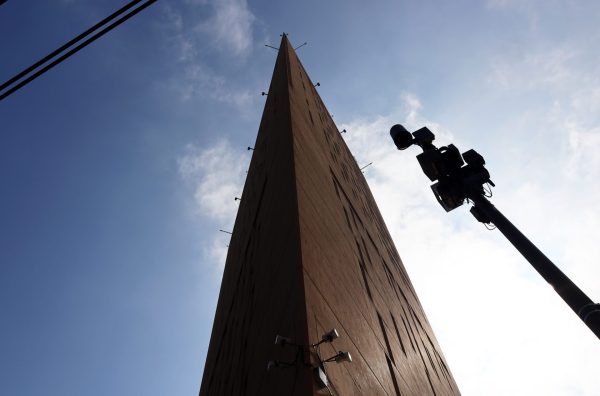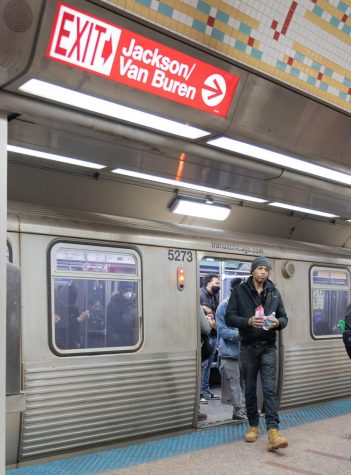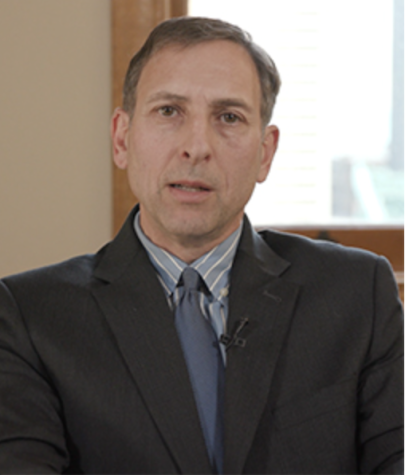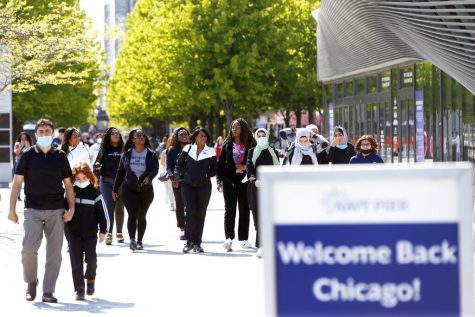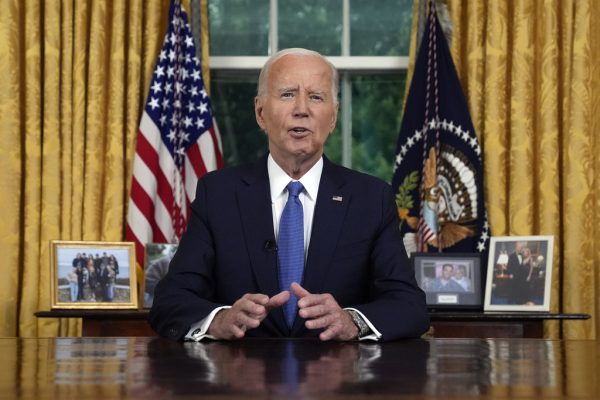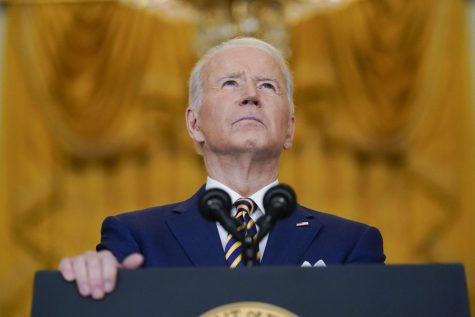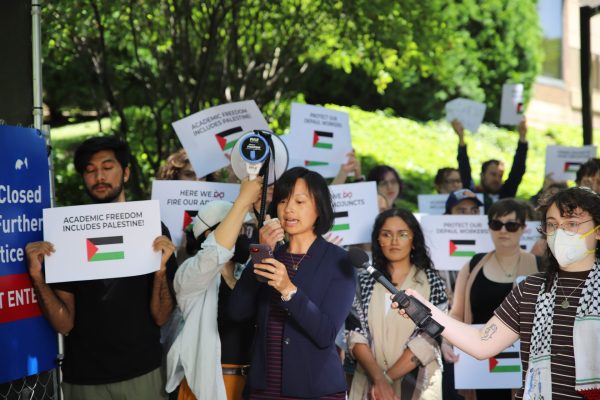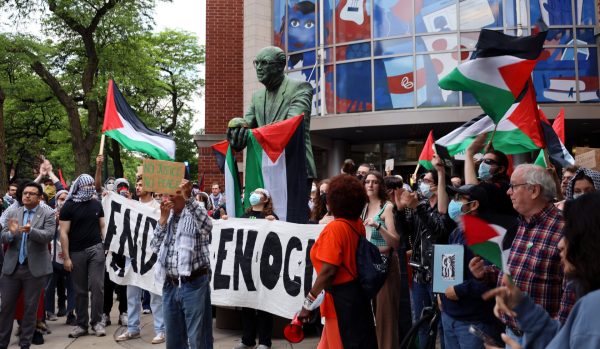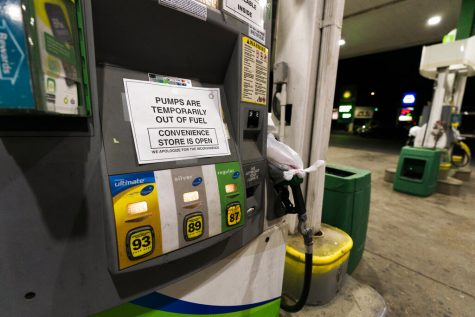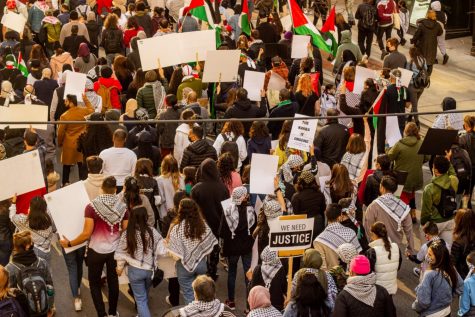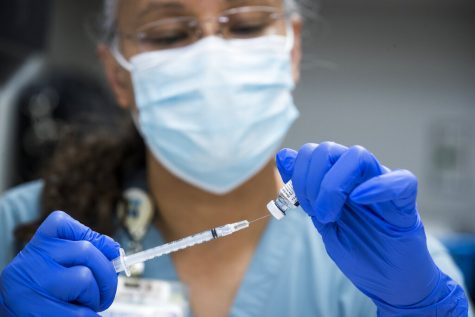Chicago enters phase 1B of vaccine distribution—but college students will have to wait
Cars in line at pharmacy drive through at Walgreens in River Forest, one of the few places to offer a Covid-19 vaccine in the area.
Chicago is in phase 1B of vaccine distribution as of Jan. 25 — and unless included as a front-line essential worker, college students are not covered in the new phase. Phase 1B entails vaccination eligibility to Chicagoans ages 65 and older, specific groups of high risk and front-line essential workers.
The majority of DePaul students will not be included in the vaccine distribution until phase two, which is expected to take place in late May of 2021.
On the city of Chicago’s website, officials warn that those who become eligible at any point for the vaccine may have to wait weeks to get an appointment. This phase may last through February and March for those qualified to receive their first dose due to limited supply and the number of providers who are able to administer the vaccine.
Phase 1A — which began on Dec. 15 — included healthcare workers and long term care facilities, residents and staff.
Phase 1B is expected to vaccinate most of those who are eligible by February or March. In addition to eligible groups, non-healthcare residential settings such as homeless shelters, correctional settings and other residential settings with local outbreaks will also be eligible in this phase.
Correctional workers, first responders, grocery store workers, daycare, K-12 and early education workers, public transit, other manufacturing and agriculture workers, and government and postal workers are also all included in this phase. The full list can be found on the city of Chicago’s website.
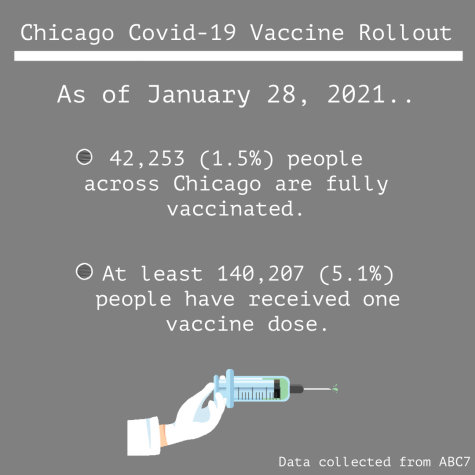
City officials predict that phase 1B will vaccinate roughly around 363,000 Chicagoans who are 65 and older, including 42,000 first responders, 142,500 education workers, and 60,000 public transit workers. Further estimates are provided on the city’s website.
The city plans to transition into phase 1C by March 29 where most who are eligible will receive vaccinations by April or May. Phase 1C includes Chicagoans ages 16-64 with underlying medical conditions and all other essential workers.
This is a predicted timeline of the city’s phases. There are many factors that could prevent a further delay of this stage.
“If we continue getting only 34,000 doses per week and 75 percent or more of people in 1B want the vaccine, then I would predict it’s not possible to begin 1C on March 29,” said Craig Klugman, a professor of public health and bioethics at DePaul. “But if Johnson & Johnson is approved by the end of February and they can get doses out a week after that, then maybe not very far beyond that date.”
Phase two includes the rest of Chicagoans who are age 16 and older, and this phase is expected to start May 31.
Chicago is currently administering the Pfizer and Moderna vaccines while other clinical trials for the AstraZenaca, Janssen and Novavax vaccines are in the final stage of testing.
The Janssen Johnson & Johnson vaccine is expected to be approved for emergency authorization by late February.
The distribution of the Pfizer and Moderna vaccines may be delayed in cities everywhere given the certain environments they have to be stored and kept in.
“The two vaccines currently approved are difficult to work with. One requires an ultra-cold freezer, the other requires a very cold freezer. They need to be used within a certain period of time once thawed and placed into syringes,” Klugman said.
Aware of how complications may arise where there are more thawed vaccines than people being vaccinated at clinics, city officials assure vaccines are not being wasted.
“We have ensured that vaccine is not wasted in Chicago. It has not been wasted in 1a and it will not be wasted in any vaccination phase. CDPH has successfully pushed out 96 percent of the vaccine Chicago has received,” it says on the city’s website.
“To ensure that doses are not wasted takes a lot of planning and coordination. First, you’ll see that the vaccine is only available by appointment. By knowing how many appointments a site has in a day, they can be sure to prepare an exact amount of vaccine,” Klugman said.
The state of Illinois in phase 1B plans to vaccine 1.3 million front-line essential workers and 1.9 million residents ages 65 and older. So far, 981,988 doses have been administered in the entire state of Illinois, while only 215,397 people are fully vaccinated.
In Chicago, 190,373 doses have been given while only 43,476 people are fully vaccinated.
Victoria Churin is a certified nursing assistant from suburban Cook County, Chicago Ridge.
Churin is amongst the 215,397 people who have been fully vaccinated in the state of Illinois as a healthcare worker.
“The process was not hard. We had to take a survey saying whether or not we wanted the vaccine and then we got a verification form from our manager which we had to bring with us,” Churin said.
As of now, 1.69 percent of the Illinois population is vaccinated and 1.61 percent of Chicago is vaccinated.
The city of Chicago and the state of Illinois have different challenges when it comes to vaccinating their populations as well as different allocations of the vaccine from the federal government.
“We do not have a lot of historical examples to know what the differences are. In the suburbs you have the challenge of distance — people have to travel further to get a vaccine. In the city, we have higher income and wealth inequalities to consider. It’s not a question of more or less difficult, but that the challenges are different,” Klugman said.
Churin also believes there needs to be more accessibility in vaccination sites as well as a quicker base in churning out more doses.
“I think that the only barrier to speeding up the process would be manufacturing more doses,” Churin said.“Making sure that there are enough accessible vaccination sites is also important as it becomes available to more people.”
On Jan. 25, Mayor Lori Lightfoot and the Chicago Department of Public Health announced the Protect Chicago Plus initiative to ensure the city’s vaccine distribution reaches individuals and communities most impacted by the Covid-19 pandemic – particularly Black and Latinx residents.
The initiative includes three main strategies as it targets 15 high-need communities based on the city’s Covid-19 vulnerability index. It’s intent is to push vaccine and city resources directly to these communities and work with community stakeholders to identify settings where vaccine access will most likely decrease virus transmission and remove barriers to vaccinating individuals.
As the transition into phases is ongoing, the vaccine will be given to all Chicagoans at no cost as more quantities become available.



